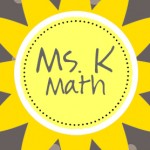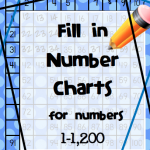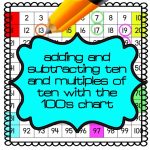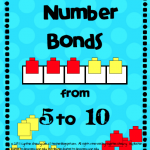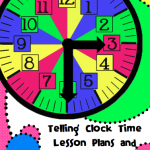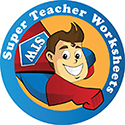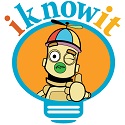How Do You Foster a Positive Learning Environment? Part 3
As a teacher your words convey an atmosphere and create the classroom environment. Genuine praise, belief, and high expectations in your students will make students believe in themselves and work harder in the classroom. Some teachers create an atmosphere of happiness all around them by their attitude and praise of their students. You will recognize these teachers because listening to them will make you smile. They get genuinely excited about students using vocabulary they have learned and about them explaining their thinking. You will hear phrases from these teachers such as, “Did you hear that? Jordan used the word dimensions and vertex! Wow! I’m going to have to put a smiley face on you.” On another occasion, this teacher I have in mind had her students ask her, “Can we stay in for recess so we can practice our 5’s times tables?” These students were so engrossed in learning from the encouragement and high expectations their teacher had for them. Focusing on building up your students will give you more positive results and leave you less worn out at the end of the day.
Kindergarten Teachers: Need an Engaging Length Lesson?
I recently observed my mentee teach an engaging lesson that reached auditory, visual, and kinesthetic learners. She used the Yarn-Length Hunt lesson in Vicki Bachman’s Sizing Up Measurement: Activities for Grades K-2 Classrooms. In this lesson students compare string to their group members’ strings. They also form a line and compare their string with each student in the class. Then students are supposed to go on a hunt for objects that are shorter and longer than their string. Instead of students going on a length hunt my mentee had tubs of objects awaiting students at their tables for them to compare with their string. We decided on this instead of the length hunt to keep the students more focused. Students compared the objects with their string and traced or drew them on paper underneath the headings shorter or longer (than their string). All of these activities were very beneficial and led to students using rich math vocabulary with their peers. In reflection we thought instead of students drawing their objects, it would be better for them to trace them. Alternatively, students could use clip art objects that represented the items in their tubs, and then students could glue them down underneath the headings shorter or longer. When students draw their objects, they are difficult to decipher and to compare with the string for assessment. This lesson is excellent for its simplicity to reach kindergarten children. With just a few tweaks, we found it to be an excellent lesson that resulted in mastery of the vocabulary shorter, longer, and compare.
A Clever Way to Help Students Make Reasonable Capacity Estimates
Never underestimate the power of using your garbage as learning tools. A college professor once told me that a teacher is only as good as her tools. With this in mind when teaching capacity, I make sure I save some garbage–an example of a gallon, half gallon, quart, pint, cup, ounce, liter, and milliliter in containers students are familiar with. All of these container sizes are easy to find in a store, and if you make your colleagues and family aware that you are collecting trash, they will be most obliged to donate to your cause. Below I will show you some pictures of trash I have collected along with a description of items you can use.
- Gallon: Milk jug or Hawaiian Punch jug
- Half Gallon: milk jug
- Quart: Buttermilk, creamer, chocolate milk
- Pint: half and half cream
- Cup: students’ milk cartons from lunch
- Ounce: I had to go to the Container Store for a small ounce container
- Liter: water bottle
- milliliter: measuring spoon (1.2 mL) or eyedropper


Ordering Materials…Get a Price Match Guarantee
Classroom Products Warehouse (CPW) may not be as well known as some educational catalogs that are slipped into your mailbox over the course of the school year. As a matter of fact, you will probably only receive one catalog at the beginning of the school year. CPW invests more time and money into their website instead of sending out multiple catalogs, so they can keep their prices low to save you money. In fact if you find an item in another educational catalog, they will match their competitors’ prices. If you order by phone, CPW also has excellent customer service. Be sure to remember CPW for your next order of classroom products.
http://www.classroomproductswarehouse.com/


Is Public Education Failing America?
While the government believes that public education is too important to trust to the free enterprise system, government spending on education is almost twice what it was in 1980 (adjusted for inflation) as student achievement has flat lined. The governmental system wants to coddle ineffective systems such as Head Start as President Obama dumps another one billion dollars into it. What will bring a heartbeat again to American education? According to people who test students internationally, the two things that ultimately affect student achievement are parental choice in the school their children attend and schools having the right to experiment.
Read more: http://www.newsmax.com/Stossel/HeadStart-Obama-vouchers-JohnStossel/2010/02/17/id/350094
How Do You Foster a Positive Learning Environment? Part 2
Procedures are the expectations you have for the way your classroom runs. If you have vague procedures, then you will not have the results you desire. For example, if you want your students to quietly put their papers in the paper tray when they finish their work, you must first consider the other problems that may occur. Students may stand around the paper tray and talk. They may rush to shuffle their papers in the tray in differing directions, or they may elbow one another when they turn their papers in because they are in a hurry. Discuss these potential problems with your students, and ask students how this could cause problems…even model the wrong way to act. Then tell students your expectations and how you want them to act. Model how to walk to the paper tray, how to place the paper in the tray, what to do when there is more than one person at the tray, and how to leave the paper tray after the they have turned the paper in. Being specific about what you expect and reinforcing your expectations will yield a well-managed, positive, classroom environment.
Are You Teaching Coordinate Grids? Try This
Marilyn Burns’ lesson book Algebraic Thinking (3-5) offers a great deeper level thinking lesson with points on a coordinate grid. The lesson is titled “Four Points” and has students plot four horizontal, diagonal, and vertical points on a grid. This is a teacher guided discussion lesson. After the students plot each set of four points the teacher charts the points and leads a class discussion in the patterns students notice in the ordered pairs charted. For example, the x coordinate in the ordered pair repeats on a vertical line, the y coordinate repeats on a horizontal line, and the coordinates each change by one on a diagonal line. This lesson is a good choice to expose students to coordinate grid vocabulary, however if you are looking for a student centered lesson to use with cooperative groups, this is not it.
Make Capacity Estimation Easy for Kids
 When teaching metric or customary capacity encourage students to bring in containers with different capacities. Have students cover up the amount that the container holds and allow their peers to guess what the container holds in both metric and customary measurements. For example, bring in a soda can, a water bottle, liquid soap bottle, etc. If students’ guesses are extremely unreasonable, allow the student holding the container to tell their peers higher or lower. After a few students bring in containers, the enthusiasm in the classroom grows and more students will contribute to the classroom capacity collection.
When teaching metric or customary capacity encourage students to bring in containers with different capacities. Have students cover up the amount that the container holds and allow their peers to guess what the container holds in both metric and customary measurements. For example, bring in a soda can, a water bottle, liquid soap bottle, etc. If students’ guesses are extremely unreasonable, allow the student holding the container to tell their peers higher or lower. After a few students bring in containers, the enthusiasm in the classroom grows and more students will contribute to the classroom capacity collection.
Increase Your Students’ Achievement By Following This Tip
Classical music influences learning, memorization and spatial reasoning according to research. The limbic system in the brain which causes long term memory is affected by music. The more emotional responses one has while learning new information, the more easily the information is retrieved from the brain. Since music causes emotional responses, begin playing music in your classroom give students a learning advantage.
A source for classroom music well worth considering has been written by music educator Maribeth Alexander. Maribeth, wrote the piano music on the album entitled Creation. She has used the music with her own students, and other teachers have used her music successfully to calm their students and increase student achievement in the classroom.
Maribeth Alexander’s Creation album may be purchased on itunes or CD baby. 02 Earth Click to hear Maribeth’s album.
http://www.cdbaby.com/cd/alexandermaribeth
Will We Leave Behind “No Child Left Behind”?
According to the following statistics, globally the US is 14th in reading, 17th in science, and 25th in math. Democratic senator Michael Bennet stated that currently only 9 out of 100 children who face childhood poverty graduate college. In response to the staggering statistics concerning education, a group of senators and the Secretary of Education are proposing to fix “No Child Left Behind”. This group of senators desires to give school districts more freedom as districts make their own decisions about high stakes testing. These senators hope that both Republicans and Democrats work together to reach a new and improved “No Child Left Behind”.
Do you feel that giving districts more freedom will improve students’ achievement? Leave your comments.
http://www.newsmax.com/InsideCover/Sens-Bennet-HaganEducationReformCritical/2011/03/03/id/388157
